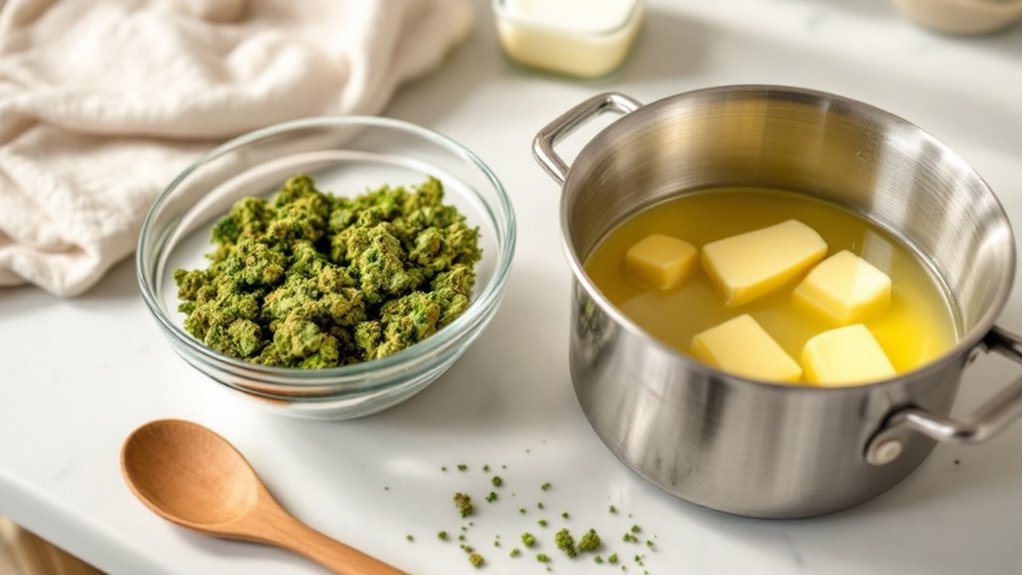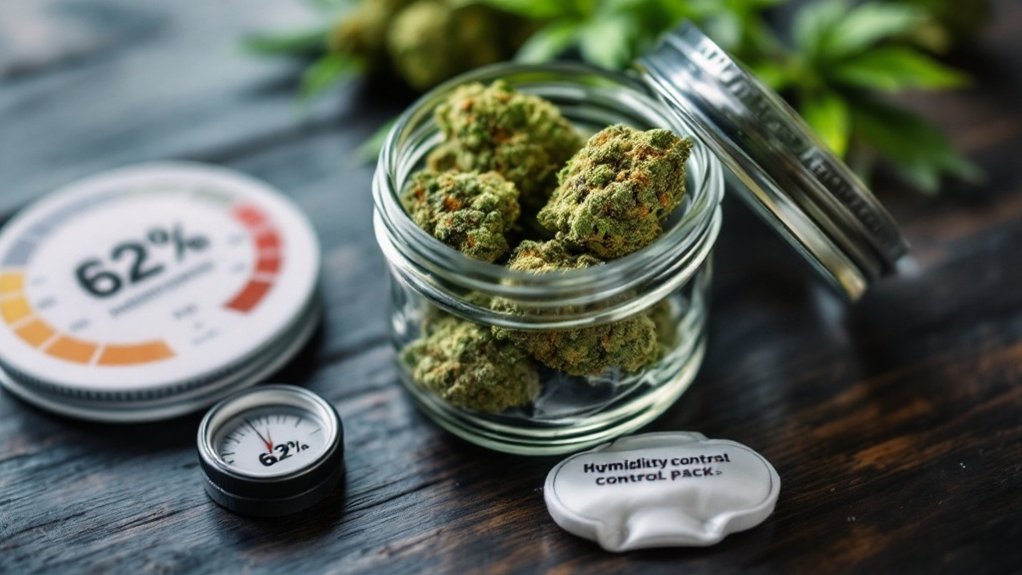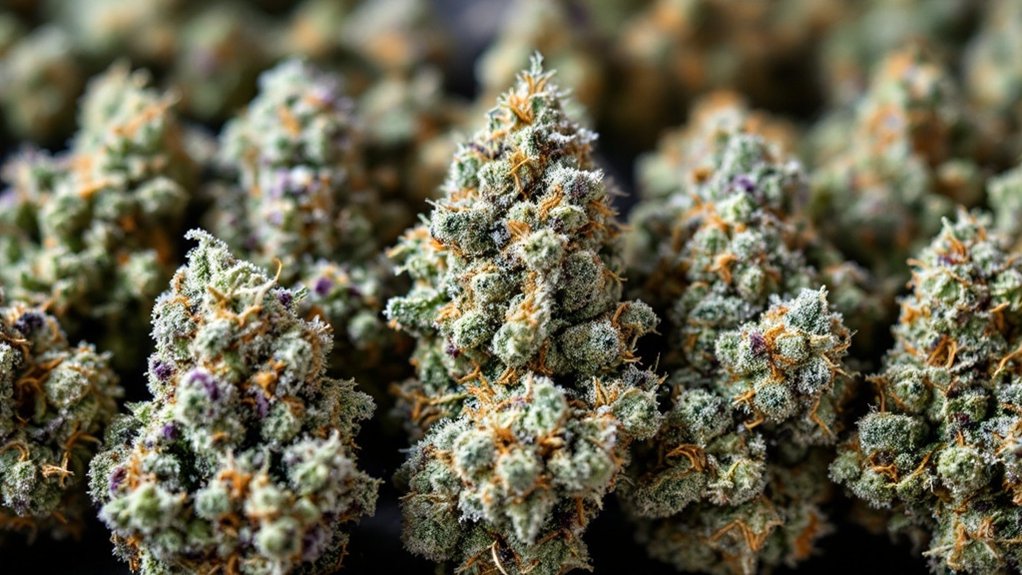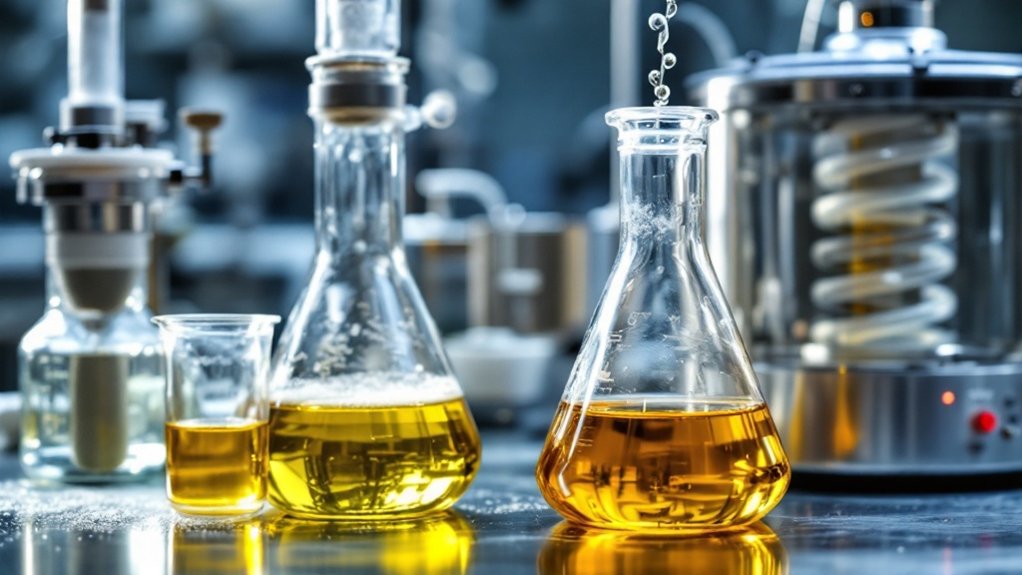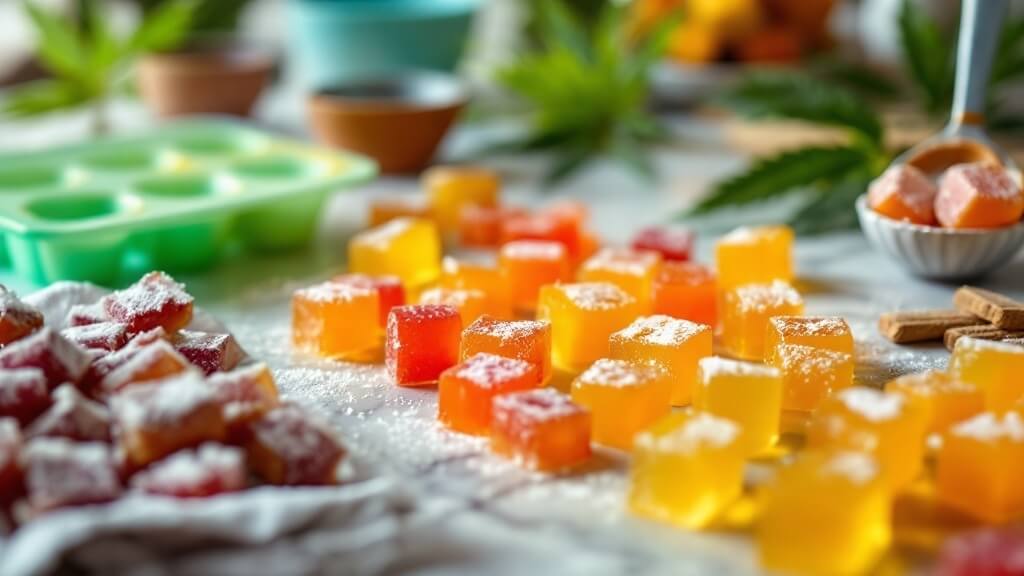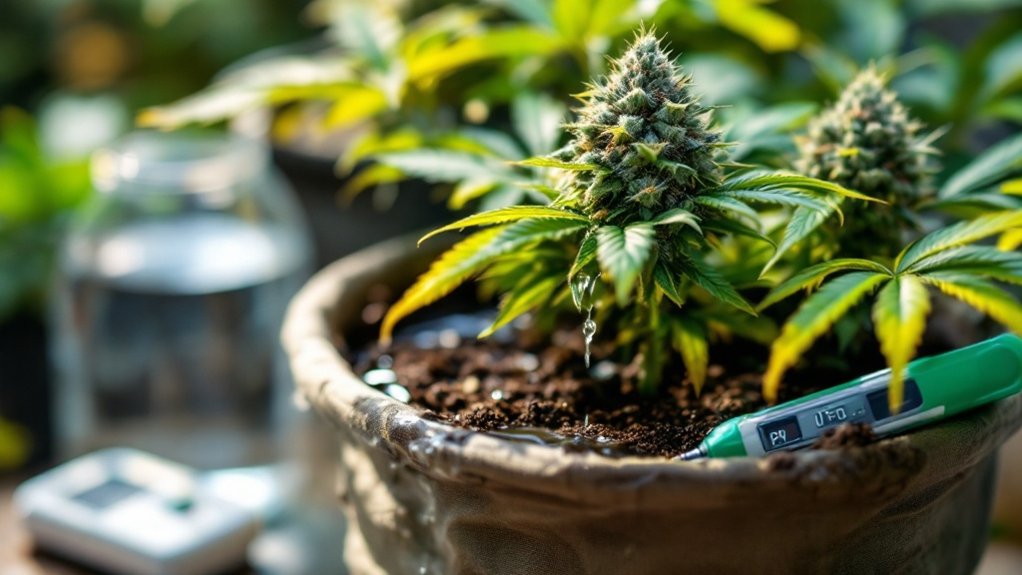To make cannabutter with shake, first decarboxylate by baking the cannabis at 245°F for 30-40 minutes, stirring occasionally. After cooling, coarsely grind the material and combine with a mixture of one cup butter and one cup water in a pot. Maintain a temperature between 160-200°F for proper infusion, stirring periodically. Once completed, strain through cheesecloth, cool at room temperature, then refrigerate until solid. The proper technique guarantees maximum potency and consistent results.
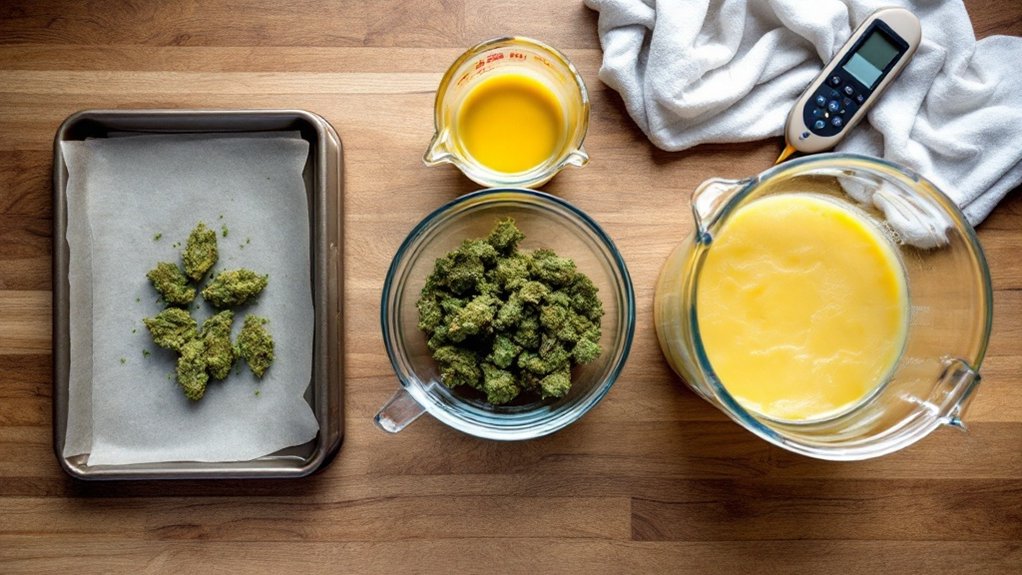
While cannabutter serves as a foundational ingredient in many cannabis-infused recipes, creating it properly requires attention to scientific processes and temperature control. The process begins with decarboxylation, a vital chemical transformation that activates the cannabinoids in marijuana. The oven should be preheated to 245°F, and cannabis shake spread evenly on a parchment-lined baking tray. The material needs to bake for 30-40 minutes, with periodic stirring every 10 minutes to guarantee even heat exposure throughout the plant material. This step is crucial because improper decarboxylation can lead to inconsistent potency in the final product.
Cannabutter creation demands scientific precision, beginning with decarboxylation to unlock the plant’s full potential.
Once decarboxylated, the cannabis should be allowed to cool before being coarsely ground. This preparation maximizes surface area for extraction without creating particles so fine they pass through filters later in the process. The base mixture requires one cup of unsalted butter combined with one cup of water in an appropriate cooking vessel. The water serves a significant function, preventing the butter from scorching and maintaining consistent temperature management during the infusion. Using high-quality butter will provide better final results as cannabinoids bind effectively to the fat.
Several cooking methods offer viable options for the infusion process. A standard saucepan or stock pot on low heat works effectively, while slow cookers, double-boilers, and sous vide precision cookers provide alternative methods with increasingly precise temperature regulation. Temperature control remains essential throughout the process, with the ideal range falling between 160°F and 200°F, and an ideal target of 180°F to maximize extraction without degrading cannabinoids.
The infusion process requires patience, typically taking approximately three hours. During this time, the mixture should be stirred occasionally to guarantee even distribution of the cannabis material throughout the lipid medium. A subtle cannabis-butter aroma indicates when the extraction nears completion. It’s always recommended to start with a low dose when trying your cannabutter in recipes, as potency can vary significantly.
The final mixture must be carefully strained through multiple layers of cheesecloth or coffee filters to separate plant material from the infused butter solution. After straining, the cannabutter should cool at room temperature for approximately 30 minutes before being transferred to refrigeration.
Once completely solidified, the butter forms a distinct layer above any remaining water, which can be separated by holding the solid butter in place while pouring off the water. The finished product can be cut into measured portions, allowing for consistent dosing when used in various recipes. This methodical approach guarantees a properly prepared cannabutter with predictable potency and culinary versatility.
Frequently Asked Questions
What’s the Ideal THC Percentage for Shake When Making Cannabutter?
The ideal THC percentage for shake when making cannabutter typically ranges from 12-15%. This moderate potency level provides sufficient cannabinoid content that allows for effective infusion while maintaining controllable dosing in the final product.
Shake with less than 10% THC may yield weak results unless larger quantities are used, while shake exceeding 18% could potentially create overly potent edibles.
Consistent testing or purchasing labeled dispensary shake helps guarantee predictable potency in the finished cannabutter.
Can I Use Water-Cured Shake for Cannabutter?
Water-cured shake is highly suitable for cannabutter production.
The water curing process removes water-soluble impurities including chlorophyll and contaminants while preserving the fat-soluble cannabinoids like THC and CBD. This results in a milder-tasting final product with reduced harshness upon consumption.
Though water curing diminishes terpene content and aromatic properties, the potency remains intact.
Users should verify the shake is thoroughly dried after water curing to prevent mold formation and guarantee proper fat infusion during the cannabutter preparation.
How Long Does Cannabutter Made With Shake Last?
Cannabutter made with shake typically lasts 1-2 weeks when refrigerated in an airtight container.
Its dairy content makes it prone to spoilage faster than other cannabis infusions.
When properly frozen, shelf life extends to approximately 6 months with minimal potency loss.
Several factors affect longevity, including exposure to air, light, heat, and the initial water content of the infusion.
Regular inspection for mold, unusual odors, or texture changes is essential before consumption.
Does Cannabutter With Shake Smell Less Than Using Flower?
Cannabutter made with shake typically smells slightly less pungent than cannabutter made with flower, primarily due to shake’s lower terpene content.
The aromatic compounds in cannabis degrade faster in shake due to increased oxidation and exposure.
However, the difference is not substantial, as the decarboxylation and infusion processes still release significant cannabis aromas regardless of the starting material.
Freshness, storage conditions, and strain genetics influence the final aroma more than whether shake or flower is used.
Can Trim Be Substituted for Shake in Cannabutter Recipes?
Trim can indeed be substituted for shake in cannabutter recipes, though users should account for its lower cannabinoid content.
When making this substitution, doubling the amount of trim is recommended to achieve comparable potency.
Trim consists primarily of sugar leaves and stems removed during processing, while shake contains more actual flower material.
Despite the potency difference, trim offers a cost-effective alternative that still delivers the desired effects when properly prepared and measured.
